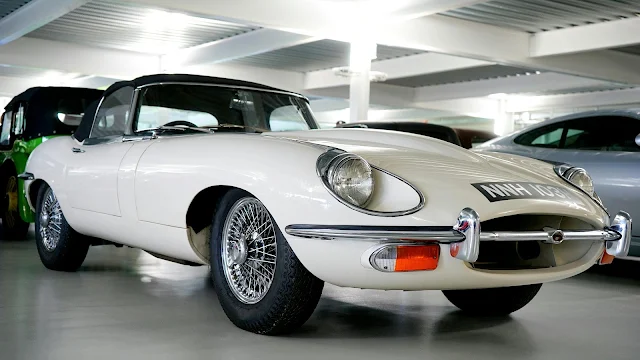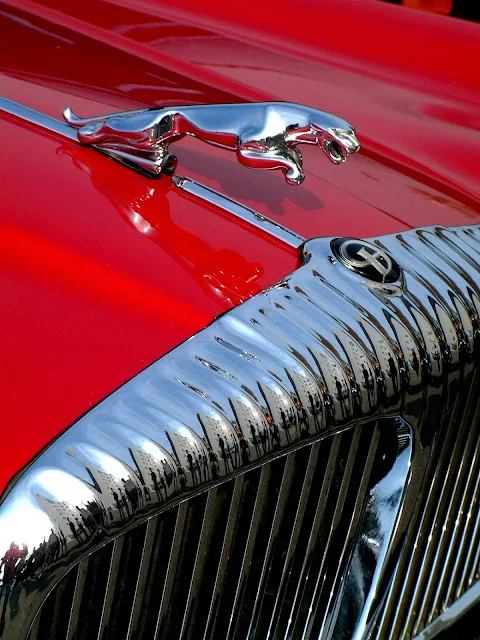Introduction
Jaguar Cars, commonly known as Jaguar, is a British luxury automobile manufacturer renowned for its impeccable craftsmanship, elegant design, and high-performance vehicles. Founded in 1922, in Britain, Jaguar origin country, as the Swallow Sidecar Company, Jaguar has evolved over the years to become a symbol of automotive excellence and sophistication.
With a rich history spanning nearly a century, Jaguar has left an indelible mark on the automotive industry, captivating enthusiasts and drivers alike with its exceptional vehicles. In this article, we will explore the fascinating journey of Jaguar Cars, from its early days to its present status as a globally recognized luxury brand. According to Jaguar Wikipedia, Jaguar's business was founded as the Swallow Sidecar Company in 1922, originally making motorcycle sidecars before developing bodies for passenger cars.
Jaguar Cars - Tata Motors - Photo by Mike Bird on Pexels
Founding and Early Years
Jaguar's story begins in Blackpool, England, with the formation of the Swallow Sidecar Company by two motorcycle enthusiasts, Sir William Lyons and William Walmsley, in 1922. Initially, the company specialized in manufacturing motorcycle sidecars, which were popular during that era. However, the ambitious Lyons soon recognized the burgeoning demand for automobiles and decided to venture into car production.
In 1931, the Swallow Sidecar Company made its debut in the automotive market with the launch of the SS1, a stylish sports car. The SS1 was well-received, and it set the stage for the company's future success in the luxury car segment. The 'SS' in the model name stood for "Swallow Sports," symbolizing the company's dedication to producing elegant and sporty vehicles.
The Evolution into Jaguar
As the company gained momentum, it rebranded itself as Jaguar Cars Ltd. in 1945. The name change was primarily to avoid any association with the initials 'SS,' which had acquired negative connotations during World War II due to its association with the Nazi organization Schutzstaffel (SS).
With the new name came a renewed focus on innovation and excellence. Jaguar's reputation soared in the 1950s with the introduction of the legendary XK120, a high-performance sports car that quickly became a sensation in the automotive world. The XK120 boasted a top speed of 120 miles per (193 km/h), according to Jaguar Wikipedia, making it the fastest production car of its time.
Jaguar Cars - Photo by Archer Hsu on Pexels
The E-Type: An Icon is Born
In 1961, Jaguar unveiled what is perhaps its most iconic and enduring model, the E-Type (or XK-E in the United States). The E-Type was a breathtakingly beautiful sports car that combined cutting-edge engineering with timeless design. Its aerodynamic silhouette, long hood, and flowing curves made it an instant classic and an object of desire for car enthusiasts worldwide.
Not only was the E-Type visually stunning, but it also offered remarkable performance. Its top speed of 150 miles per hour (241 km/h) and acceleration from 0 to 60 miles per hour (0 to 97 km/h) in under 7 seconds were outstanding feats for its time. The E-Type solidified Jaguar's reputation as a purveyor of high-performance luxury cars and became a symbol of the Swinging Sixties.
Ownership Changes and Challenges
In the decades that followed, Jaguar faced various challenges, including changes in ownership and financial struggles. In 1966, the British Motor Corporation (BMC) merged with Jaguar to create British Motor Holdings (BMH). Subsequent mergers and acquisitions led to the formation of British Leyland, which later became the Rover Group.
Despite the ownership changes, Jaguar continued to produce exceptional cars, but it faced difficulties in maintaining the same level of quality and craftsmanship. In the 1980s and 1990s, the brand's reputation suffered as some models were plagued by reliability issues. However, Jaguar's spirit endured, and it continued to develop new vehicles with a focus on combining performance and luxury.
Rebirth and Expansion
In 1989, Jaguar became part of Ford's Premier Automotive Group (PAG) when Ford Motor Company acquired the brand. This new ownership breathed new life into Jaguar, and substantial investments were made to modernize production facilities and improve quality control.
Under Ford's ownership, Jaguar released several successful models, including the Jaguar XK8 and the Jaguar XJ series. The XJ, in particular, became a flagship luxury sedan, featuring cutting-edge technology and a design that paid homage to Jaguar's illustrious past.
Acquisition by Tata Motors
In 2008, after nearly two decades under Ford's ownership, Jaguar and its sibling brand Land Rover were acquired by Tata Motors, an Indian automotive giant, the new Jaguar Owners. The acquisition brought Jaguar under the umbrella of the Jaguar Land Rover (JLR) company, allowing for greater synergies between the two brands.
Tata Motors' the new Jaguar Company Owners proved to be a turning point for Jaguar, with renewed focus on quality, innovation, and sustainability. Under Tata Motors' stewardship, Jaguar introduced its first all-electric vehicle, the Jaguar I-PACE, in 2018. The I-PACE, an electric SUV, won several prestigious awards and further solidified Jaguar's position as a pioneer in automotive electrification.
According to Jaguar Wikipedia, Tata Motors bought Jaguar and Land Rover in all-cash transaction of $2.3 billion from Ford in June 2008. Nearly half of what Ford Motor paid to acquire both brands.
The Modern Jaguar
Today, Jaguar continues to produce a diverse range of vehicles that cater to both luxury and performance enthusiasts. The lineup includes the Jaguar XE and XF sedans, the F-PACE and E-PACE SUVs, and the iconic Jaguar F-TYPE sports car. Each model embodies Jaguar's dedication to crafting vehicles that blend elegance, performance, and advanced technology.
The brand's commitment to sustainability is also evident in its "Reimagine" strategy, which aims to transform Jaguar into an all-electric luxury brand by 2025. As part of this strategy, Jaguar has announced plans to phase out internal combustion engine vehicles and invest heavily in electric vehicle development.
Conclusion:
Jaguar Cars' journey from a sidecar manufacturer to a symbol of automotive excellence is a testament to the brand's enduring appeal and innovation. With a legacy built on iconic designs, powerful performance, and a commitment to luxury, Jaguar continues to capture the hearts of automotive enthusiasts around the world. As the brand embraces electric mobility and sustainability, it looks set to create a new chapter in its history, reaffirming its position as a pioneering force in the automotive industry.








